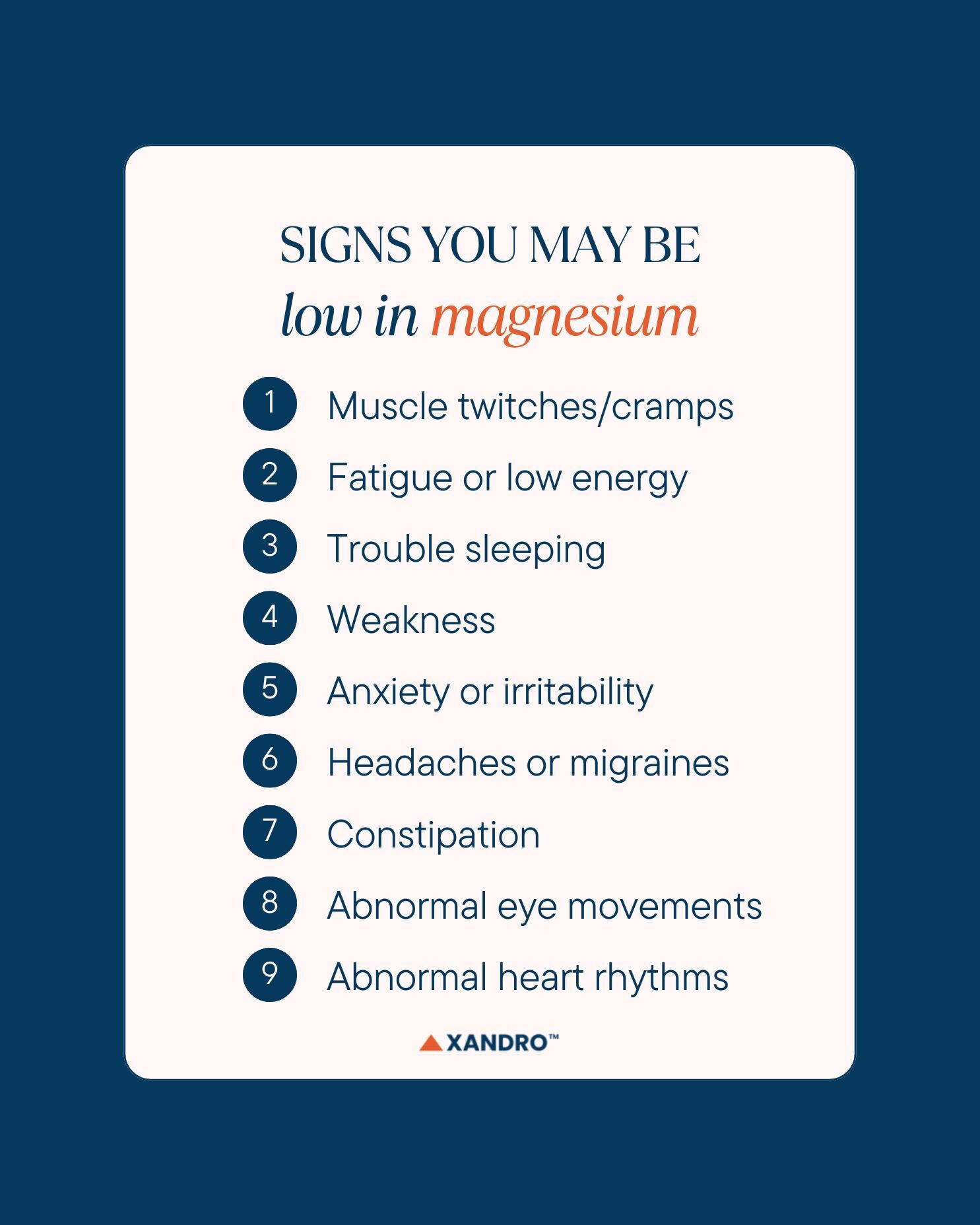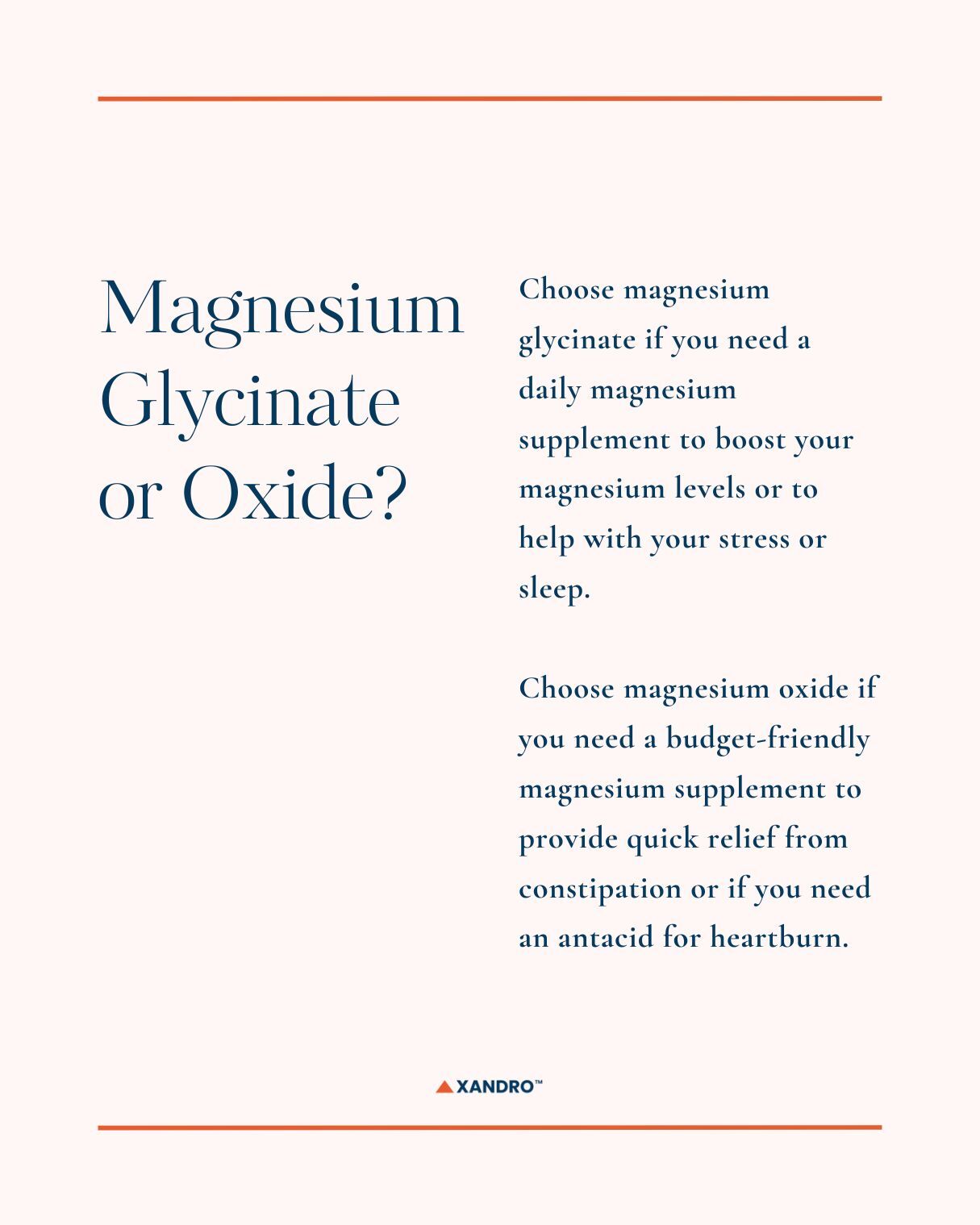Magnesium Wars: Magnesium Glycinate vs Magnesium Oxide
8th Apr 2025
Magnesium Glycinate vs Magnesium Oxide: Which One Should You Take?
Magnesium is a mineral involved in over 300 biochemical reactions in the body, supporting everything from muscle function to nerve signalling to energy production to mental health.
Did you know that, despite its importance, nearly half of people don’t get enough magnesium from their diet alone? This can lead to fatigue, muscle cramps, poor sleep, anxiety and even heart palpitations. This is where magnesium supplements come in, but with so many different kinds of magnesium available, how do you know which one is right for you?
Two of the most common forms are magnesium glycinate and magnesium oxide. While both provide magnesium, they differ significantly in absorption, benefits and side effects. So, which is better: magnesium glycinate or oxide?
Let’s break it down.
Understanding Bioavailability: Why It Matters
Before comparing these two, when it comes to magnesium, it’s important to understand bioavailability, or how well your body absorbs and uses the magnesium you take.
- High bioavailability = More magnesium absorbed = Better results
- Low bioavailability = Less absorbed = Potential waste (and possibly digestive upset)
This is the key difference between magnesium glycinate vs oxide.
Signs you might be low in magnesium include:
- Muscle twitches or cramps
- Fatigue and low energy
- Trouble sleeping
- Anxiety or irritability
- Headaches or migraines
- Constipation or irregular digestion
If you experience these symptoms, a magnesium supplement might help — but as you will see, the form you choose makes a huge difference. If this is you, have a chat with your doctor and discuss with them which might be the best form of magnesium to take for your health needs.
Further Reading: Do Blood Tests Show Accurate Magnesium Levels?

Magnesium Glycinate
What Is Magnesium Glycinate?
Magnesium glycinate (also called magnesium bisglycinate) is magnesium bound to glycine, an amino acid that helps with relaxation and sleep. This combination makes it one of the most absorbable and gentle forms of magnesium.
Magnesium Glycinate Benefits:
- Highly bioavailable: Absorbs efficiently in the gut (around 18.8 per cent absorption rate). This is because glycine acts like a ‘carrier,’ helping magnesium pass through your gut lining more easily. Unlike other forms, it doesn’t pull water into your intestines (meaning no diarrhoea).
- Gentle on digestion: Unlike other forms, like oxide or citrate, it rarely causes diarrhoea or stomach upset.
- Calming effects: Glycine may help with anxiety, stress and sleep.
- Good for long-term use: Best for correcting deficiencies without side effects.
Magnesium Glycinate is Best For:
- People with low magnesium levels
- Anyone looking for better sleep or stress relief
- People with muscle cramps or spasms
- Those with anxiety, stress or insomnia
- Anyone with digestive sensitivities (IBS, acid reflux, etc.)
- Those looking for a highly absorbable magnesium supplement
Potential Magnesium Glycinate Side Effects:
- Rare, but may include mild nausea (uncommon compared to other forms)
Further Reading: Magnesium and Muscles
Magnesium Oxide
What Is Magnesium Oxide?
Magnesium oxide is magnesium bound to oxygen, making it one of the cheapest and most common forms of magnesium in supplements. It has very low absorption, though, meaning most of it passes right through your body.
Magnesium Oxide Benefits:
- Effective short-term laxative: Draws water into the bowels, helping with occasional constipation.
- Helps with heartburn & indigestion: Acts as an antacid (found in products like Milk of Magnesia).
- High elemental magnesium content: But most of it isn’t absorbed.
- Very affordable: One of the cheapest forms of magnesium.
The Big Problem with Magnesium Oxide?
- Poor absorption: The magnesium in oxide is tightly bound to oxygen, making it difficult for your gut to break it down. Only about 4 per cent of the magnesium in oxide supplements actually gets absorbed. The rest stays in your intestines, which is why it’s often used as a laxative.
- Commonly causes diarrhoea & cramping: Due to poor absorption
Magnesium Oxide is Best For:
- Those needing short-term constipation relief
- People looking for a low-cost magnesium option
- Anyone using it as an antacid for heartburn
Magnesium Oxide is Worst For:
- Correcting a magnesium deficiency (since so little is absorbed)
- People with digestive sensitivities
Magnesium Glycinate vs Oxide: Key Differences
|
Factor |
Magnesium Glycinate |
Magnesium Oxide |
|
Bioavailability |
High (~18.8 per cent) |
Very low (~4 per cent) |
|
Absorption |
Excellent |
Poor |
|
Best Uses |
Deficiency, sleep, stress |
Constipation, heartburn |
|
Digestive Effects |
Gentle, rarely causes issues |
Often causes diarrhoea |
|
Cost |
More expensive |
Very cheap |
|
Ideal For Daily Use |
Yes |
No (best for occasional use) |
Further Reading: Can I Take Magnesium Daily?
Which Type of Magnesium Is Best for You?
The answer depends on why you’re taking it:
Choose Magnesium Glycinate If You Need:
- Better magnesium levels (due to high absorption)
- Stress or sleep support (thanks to glycine’s calming effects)
- A gentle, daily supplement (no digestive upset)
Choose Magnesium Oxide If You Need:
- Quick relief from constipation (acts as a laxative)
- An antacid for heartburn
- A budget-friendly option
If you’re unsure, magnesium glycinate is generally the better choice due to its high absorption and minimal side effects.

Can I Take Magnesium Glycinate and Magnesium Oxide Together?
You can take the two together, but with caution:
- Magnesium oxide could cause digestive issues if taken in high doses.
- Magnesium glycinate is better for daily use, while oxide can be used occasionally for digestion issues.
A blended supplement with multiple forms may be useful but always check dosages to avoid excessive intake. The recommended daily allowance of elemental magnesium is 400 to 420mg daily for men and 310 to 320mg daily for women.
End Note
While magnesium oxide is cheaper and useful for specific issues like constipation, magnesium glycinate is the clear winner for better absorption, fewer side effects and long-term magnesium supplementation.
If you’re looking for ‘What is the best form of magnesium to take?’, magnesium glycinate is the most effective and well-tolerated option. If you’ve done your research on the different types of magnesium and have decided to try magnesium glycinate, consider taking Xandro’s Magnesium Glycinate 500mg supplement to help boost your elemental magnesium levels long term.
Be sure to also check out our other magnesium comparison blogs!
